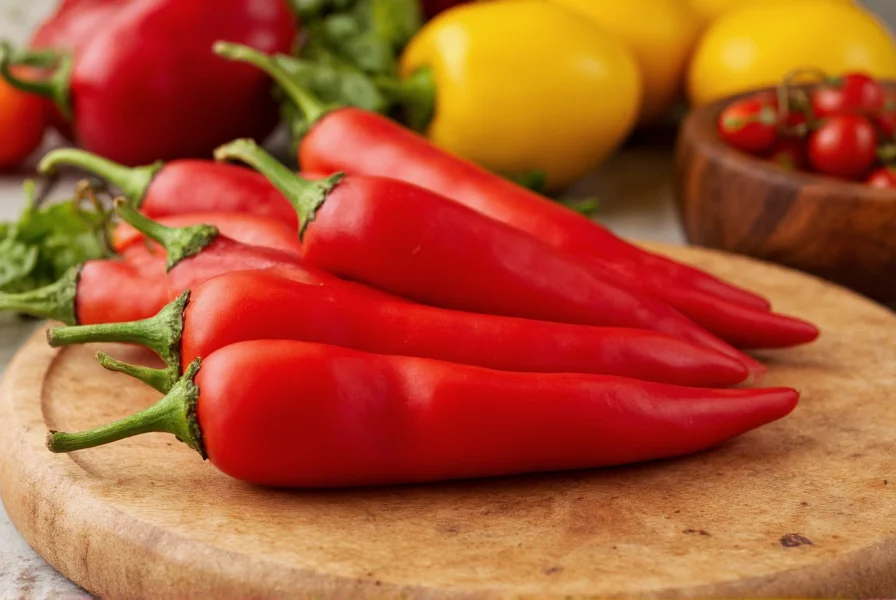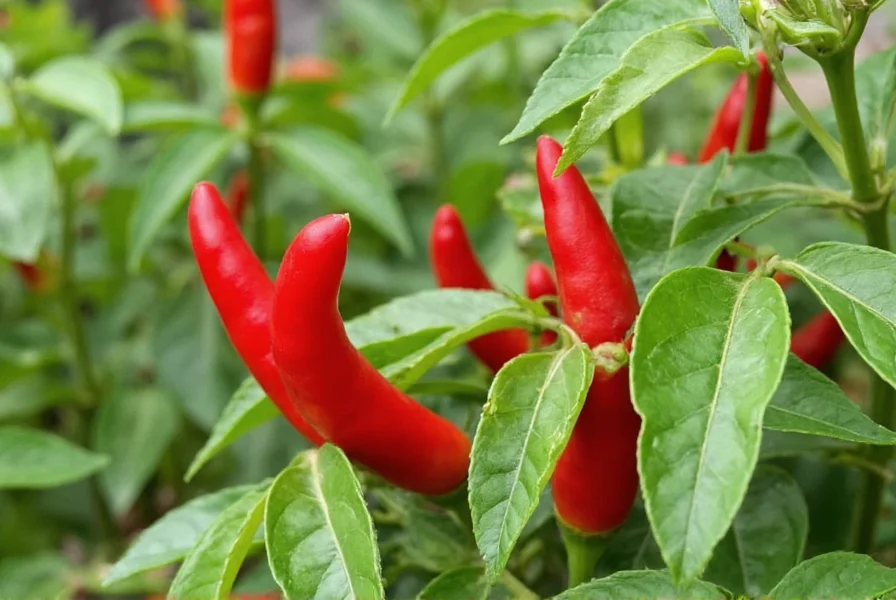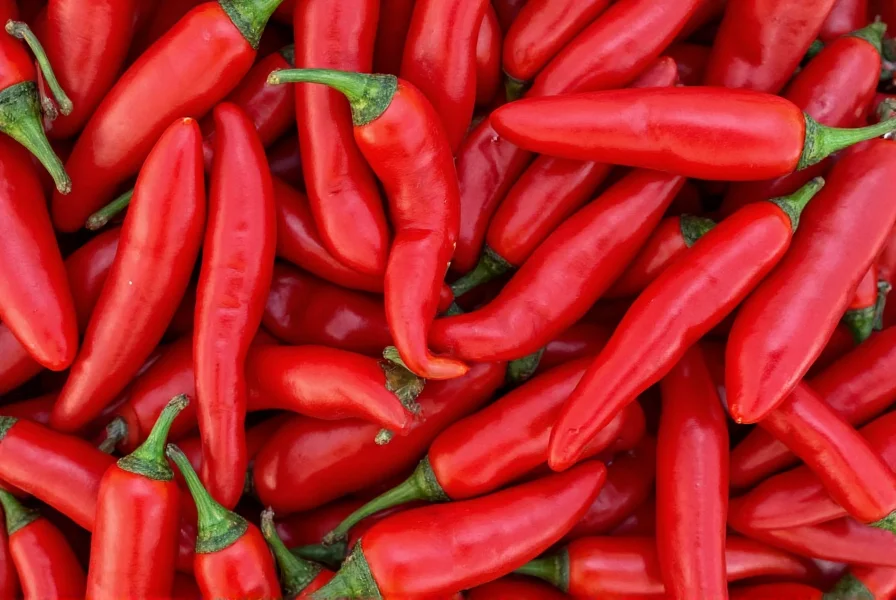Understanding Fresno Chili Pepper Characteristics
When evaluating red fresno chili peppers vs jalapeno, several distinguishing features become apparent. While both peppers occupy the same medium heat range on the Scoville scale, Fresnos deliver a more complex flavor profile. Their thinner walls make them ideal for quick cooking methods, whereas jalapeños' thicker flesh holds up better to stuffing and grilling. The heat level of how hot are red fresno chili peppers typically ranges from 2,500 to 10,000 Scoville Heat Units (SHU). This places them just below serrano peppers but comparable to standard jalapeños. The heat concentrates in the seeds and white membranes, so removing these significantly reduces spiciness while preserving flavor.| Pepper Characteristic | Red Fresno | Jalapeño | Serrano |
|---|---|---|---|
| Heat Level (SHU) | 2,500-10,000 | 2,500-8,000 | 10,000-23,000 |
| Flavor Profile | Bright, slightly sweet | Grassy, vegetal | Sharp, intense |
| Wall Thickness | Thin | Thick | Medium |
| Best Cooking Method | Raw, roasted, pickled | Grilled, stuffed | Raw, in salsas |
Seasonality and Availability
The red fresno chili peppers season typically runs from late summer through fall, though greenhouse cultivation has extended their availability year-round in many markets. Farmers' markets offer the freshest specimens during peak season, while grocery stores usually carry them from June through December. When selecting peppers, look for firm, glossy specimens without wrinkles or soft spots. The transition from green to red happens on the plant, so fully red peppers have developed their characteristic sweetness. Some markets sell them at various stages of ripeness, allowing cooks to choose based on desired heat and flavor intensity.Culinary Applications
The best uses for red fresno chili peppers leverage their bright color and balanced heat. They excel in:- Salsas and sauces - Their thin walls break down easily when blended
- Roasted applications - Develops a sweet, smoky complexity
- Pickling - Retains vibrant color and adds tangy heat
- Garnishes - Thin slices add color and moderate heat to finished dishes

Substitution Guidance
When you can't find Fresnos, understanding red fresno chili peppers substitutes becomes essential. The closest alternatives include:- Red jalapeños - Nearly identical heat with slightly different flavor
- Italian sweet frying peppers (with added heat) - Similar texture but milder
- Serranos (used sparingly) - Hotter but similar flavor profile
- Thai bird chilies (in small quantities) - Much hotter but similar fruitiness
Growing and Storage Information
Home gardeners interested in growing red fresno chili peppers should note they require 70-80 days to reach full maturity from transplanting. They thrive in warm climates with well-draining soil and consistent watering. The peppers start green and gradually turn red over 2-3 weeks as they ripen on the plant. Proper storage extends freshness significantly. Keep unwashed peppers in a paper bag in the refrigerator's crisper drawer for up to 2 weeks. For longer preservation, freeze roasted peppers in airtight containers (up to 6 months) or pickle them for shelf stability.
Nutritional Benefits
The red fresno chili peppers nutritional benefits include high vitamin C content (more than oranges by weight) and capsaicin, which has been studied for potential metabolic and anti-inflammatory effects. Like all chili peppers, they contain antioxidants that support overall health when consumed as part of a balanced diet. One medium red Fresno pepper (about 15g) provides approximately:- 9 calories
- 219% of daily vitamin C
- 10% of daily vitamin A
- Trace amounts of B vitamins and potassium
Conclusion
Red Fresno chili peppers offer a perfect balance of moderate heat and complex flavor that makes them indispensable in many culinary applications. Their versatility across raw, roasted, and pickled preparations, combined with their vibrant color, explains their popularity among both professional chefs and home cooks. Understanding their unique characteristics compared to similar peppers allows for more informed substitutions and better recipe execution.Frequently Asked Questions
How hot are red Fresno chili peppers compared to jalapeños?
Red Fresno chili peppers range from 2,500-10,000 Scoville units, which is comparable to standard jalapeños (2,500-8,000 SHU). While their heat ranges overlap, Fresnos often taste slightly milder due to their fruitier flavor profile that balances the heat.
Can I substitute red Fresno peppers for jalapeños in recipes?
Yes, red Fresno peppers make an excellent substitute for jalapeños in most recipes. They have similar heat levels but offer a slightly fruitier flavor. When substituting, use equal amounts, but note that Fresnos have thinner walls which may affect texture in stuffed or grilled applications.
When is the best time to buy fresh red Fresno chili peppers?
The peak season for red Fresno chili peppers runs from late summer through fall (August to November). However, thanks to greenhouse cultivation and varied growing regions, they're typically available year-round in most grocery stores and specialty markets.
How should I store red Fresno chili peppers to maximize freshness?
Store unwashed red Fresno peppers in a paper bag in your refrigerator's crisper drawer for up to 2 weeks. Avoid plastic bags which trap moisture and accelerate spoilage. For longer storage, roast and freeze them in airtight containers for up to 6 months or pickle them for shelf stability.
What's the difference between green and red Fresno chili peppers?
Green Fresnos are unripe versions of the same pepper that will eventually turn red. Green Fresnos have a grassier flavor and slightly higher heat, while red Fresnos develop a sweeter, fruitier profile as they mature. The red variety contains more capsaicinoids and antioxidants due to the ripening process.











 浙公网安备
33010002000092号
浙公网安备
33010002000092号 浙B2-20120091-4
浙B2-20120091-4